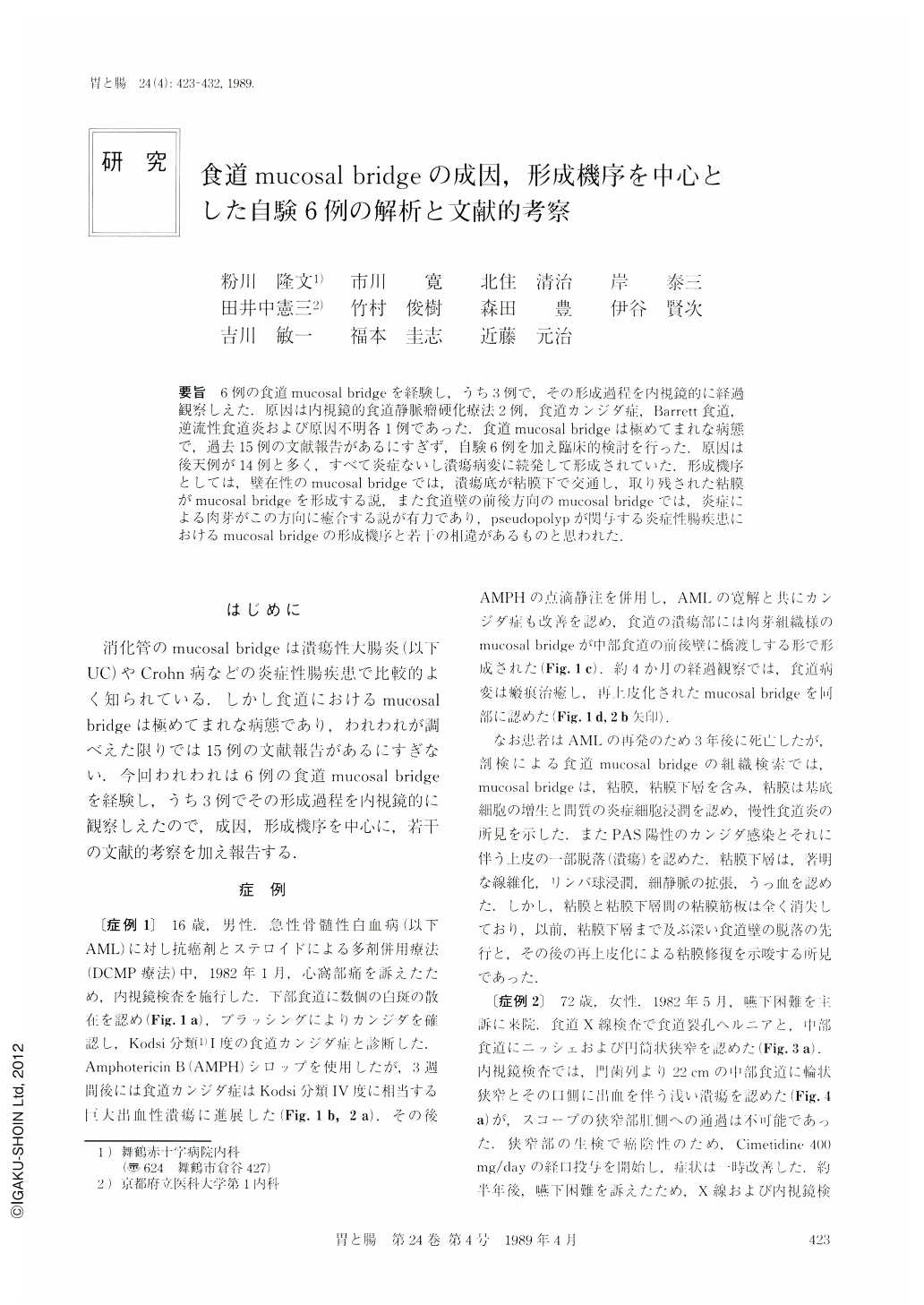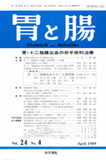Japanese
English
- 有料閲覧
- Abstract 文献概要
- 1ページ目 Look Inside
- サイト内被引用 Cited by
要旨 6例の食道mucosal bridgeを経験し,うち3例で,その形成過程を内視鏡的に経過観察しえた。原因は内視鏡的食道静脈瘤硬化療法2例,食道カンジダ症,Barrett食道,逆流性食道炎および原因不明各1例であった.食道mucosal bridgeは極めてまれな病態で,過去15例の文献報告があるにすぎず,自験6例を加え臨床的検討を行った.原因は後天例が14例と多く,すべて炎症ないし潰瘍病変に続発して形成されていた.形成機序としては,壁在性のmucosal bridgeでは,潰瘍底が粘膜下で交通し,取り残された粘膜がmucosal bridgeを形成する説,また食道壁の前後方向のmucosal bridgeでは,炎症による肉芽がこの方向に癒合する説が有力であり,pseudopolypが関与する炎症性腸疾患におけるmucosal bridgeの形成機序と若干の相違があるものと思われた.
Esophageal mucosal bridge (EMB) is a rare condition. To date (1986), only 15 cases have been reported in world medical literature, 9 cases in English and 6 in Japanese.
Six cases of EMB are presented. Twenty-one cases including 6 of the author's are reviewed. Conclusions are as follows : 1) Two cases are extremely rare ones, including EMB observed in a case of Barrett-esophageal ulcer accompanying congenital broncho-esophageal fistula. No such cases have been reported in medical literature.
2) The etiology of EMB is not yet known. Inflammation and/or ulcer of the esophagus are seen in most cases, suggesting that the etiology of EMB is acquired(Table 1).
3) The location of EMB is mainly the middle and lower esophagus. EMB can be single or double. Intramucosal form of EMB is the one mainly recognized. In 7 cases, EMB formed in an anteroposterior direction was seen. This form is supposedly another characteristics of EMB (Table 2).
4) Pathological conditions seen in the esophagus with EMB are varied, these are, ulcer, moniliasis, hiatal hernia, stenosis, etc (Table 2).
5) Histological findings of EMB are normal in congenital cases. In acquired case, esophagitis, fibrosis and granulomatous tissue are demonstrated. These varied findings are presumably due to the difference in grade of inflammation and period of examination in each case.
6) In inflammatory bowel disease, the fusion of pseudopolyposis is thought to be the main cause of mucosal bridge formation. In the esophagus, however, communication of two ulcers in the submucosa and fusion of granulomatous tissue in an anteroposterior direction are considered to be the main mechanisms for the formation of EMB (Fig. 11) . The authors consider that the follow-up studies in 3 cases support these two theories (Figs. 1, 4 and 7)

Copyright © 1989, Igaku-Shoin Ltd. All rights reserved.


